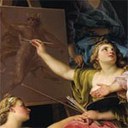0057 "[...] denn gute Gemälde hatte ich versprochen, gute habe ich geliefert, aber, aber [...]"
Ein folgenreicher Streit um die Erwerbung eines Filippino Lippi im Städelschen Kunstinstitut um 1820
Identifiers (Article)
Identifiers (Files)
Abstract
At the beginning of the 19th century, German artists lived in Italy and worked as art agents for art galleries in their home countries, in cities like Munich or Berlin. One such art trade partner was the Städelsches Kunstinstitut (Städel's Art Institute), in Frankfurt am Main, Germany. One of their art agents was the painter Johann David Passavant, then living in Italy, who consulted with two of "the best living adepts", Carl Friedrich von Rumohr, and Giovanni Battista Metzger. Having sent the first shipment across the Alps, differences in taste, slander, and even character assassination between the protagonists involved in Frankfurt and the art agents in Italy provoked a conflict among an entire network of art connoisseurs across Europe (1817-1823). Using an excellent document record, the article reconstructs the debate which shows us the protagonists' lines of argument in the context of the varied and changing art ideals, their aims, and their methods of arriving at a solution. It is possible that this art trade story may reveal a part of the provenance of a lost painting of the Gemäldegalerie Berlin.
Statistics


License

This work is licensed under a Creative Commons Attribution-NonCommercial-NoDerivatives 4.0 International License.



